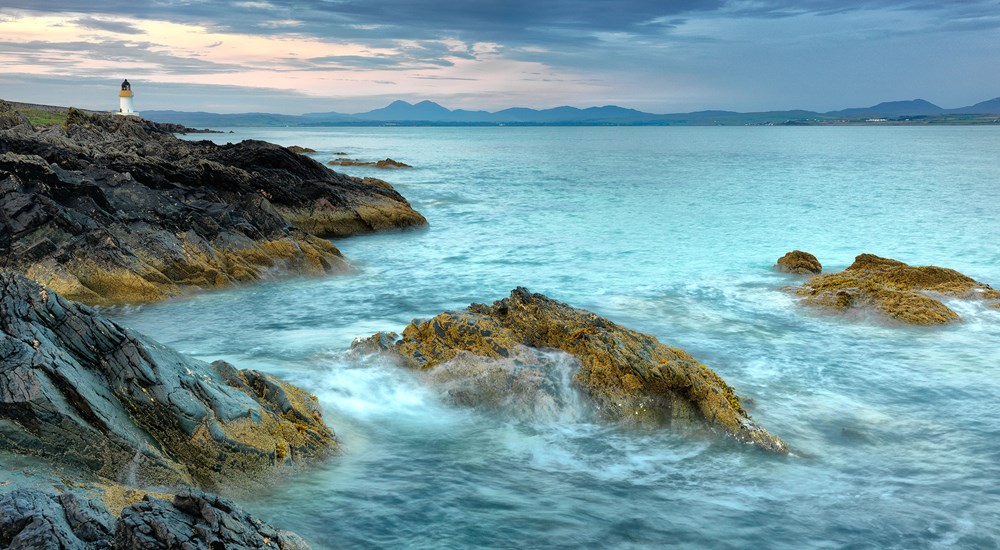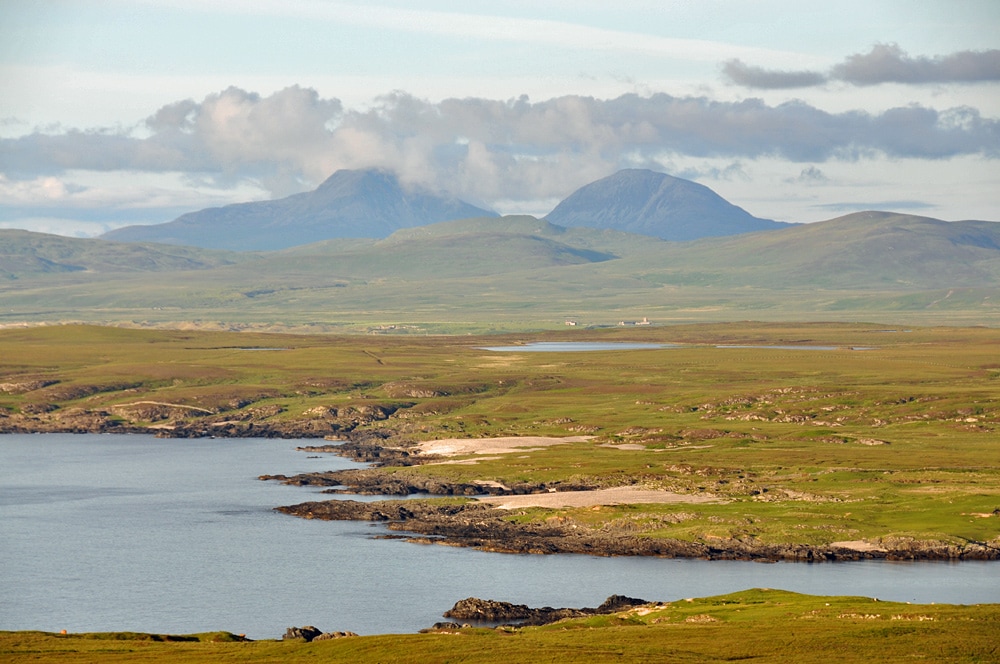Background
|
Islay is part of the Southern Hebrides and is inhabited by approximately 3200 people. In terms of renewable energy, the Islay Energy Trust represents the community with regards to renewable energy projects. A demonstration tidal array, consisting of ten 1MW Andritz Hydro Hammerfest HS1000 tidal turbines, and owned by Scottish Power Renewables has been approved for the Sound of Islay. [1]
The project is anticipated to generate around 30GWh of electricity annually, roughly the same as the consumption on the islands of Jura and Islay. This climate, with regards to renewable energy and the explicit tidal resource, presents an ideal opportunity to test the robustness of the decision tool in the hope that it returns tidal stream devices in the Sound of Islay as the preferred resource. |
This case study is intended to be more concise than that performed on the Isle of Eigg; there is substantially less available data than that which was provided for Eigg and it was therefore unlikely that a suitable model of the existing grid could be created. Additionally, the intention of this case study is purely to demonstrate the correlation of the general recommendation of the tool with the explicitly available tidal resource which exists on Islay, as the previous case study provides the demonstration of the accuracy of the recommendations regarding the estimated LCoE.
Location
Existing Grid and Renewable Capacity
Islay currently has a variety of renewable generation devices installed which are distributed around the island, some specifically installed to supply particular businesses, others installed for testing and research purposes.
- Waste heat from the neighbouring Bowmore Distillery is used by the community swimming pool in the MacTaggart Leisure Centre.
- Bruichladdich Distillery uses anaerobic digestion to capture energy from its waste products.
- Photovoltaic solar panels were used in the development of Ionad Chaluim Chille Ìle, the Gaelic Community Centre.
- Port Mòr Community Centre is fitted with a wind turbine, solar thermal heating and a ground source heat pump.
- LIMPET oscillating water column was successfully tested on South West shore near Portnahaven.
- 10 Andritz Hammerfest 1 MW tidal stream array proposed to be installed in Sound of Islay.
Sites of Interest
Tidal Stream
Similar to the Eigg based case study, several locations were identified with significant potential using the UK Renewables Atlas, those which possessed the largest resource and displayed suitable geographic qualities are identified below:
Tidal Range
|
Tidal range data was taken from publicly available UK Hydrographic Data for Port Ellen. The close proximity of both locations allowed for the use of the same tidal details, although each site still possesses unique characteristics, specifically the surface area of the proposed lagoon and maximum/mean tidal ranges:
Bowmore: Max Tidal Range: 0.8 m Mean Tidal Range: 0.4 m Lagoon Surface Area: 49500 m^2 Port Ellen: Max Tidal Range: 1.2 m Mean Tidal Range: 0.66 m Lagoon Surface Area: 26550 m^2 |
Wave
|
Again, following the established procedure, sites which would likely present the most available wave resource were identified using the UK Renewables Atlas. Given the location of Islay, this is the areas which are West and Southwest of the island as prevailing winds and waves approach from the North Atlantic.
Portnahaven: Near Shore Average Water Depth: > 20 m Average Wave Height: 2.1 m Portnahaven: Offshore Average Water Depth: > 20 m Average Wave Height: 1.8 m Mull of Oa Average Water Depth: > 20 m Average Wave Height: 1.8 m |
Matrix Selections
Tidal Stream
|
Wave
|
The returned devices from the matrix display a strong bias towards the use of horizontal axis tidal turbines, ideally deployed in the Sound of Islay, namely the Atlantis AR-1500. This is reflected in the power density provided during the resource assessment and also the low cost of energy associated with these devices.
It should be noted that of the proposed devices, a particularly high scoring device, the Andritz Hydro Hammerfest HS1000 is that which is scheduled for deployment in the demonstrator project for the Sound of Islay, this perhaps identifies the correlation of the advisory tool with actual events and demonstrates the robustness of the tool in providing sensible recommendations. |
|
Although displaying significantly poorer results than tidal stream devices, it would be beneficial to identify the strongest performing technology with regard to wave energy converters.
The Wave El Buoy, a point absorber rated at 150kW provides the most cost effective output as an alternative to tidal stream technology. This may indicate that additional effort should be expended in investigating this further dependent on the outcome of the tidal demonstrator array. Full results can be seen in the Isle of Islay case study, available on the Downloads page. |
References
[1] https://islayenergytrust.org.uk/tidal-energy-project/







